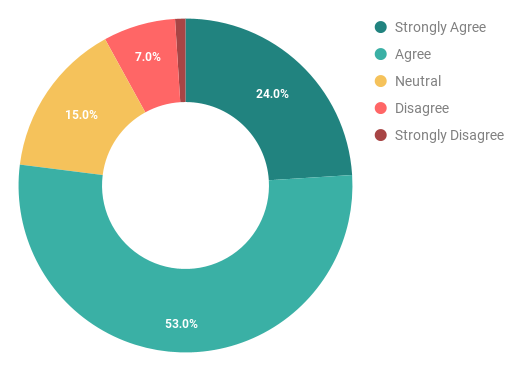Why am I failing to engage my workforce in cybersecurity training?

feel overwhelmed with the amount
of information they receive at work
prefer video content when
doing their training
said lack of time is the biggest barrier
when effectively implementing
cybersecurity training information
*Ping!*
*Ping! Ping! Ping! Ping! Ping!*
In the humdrum of daily tasks, targets to meet, pings from emails and messaging apps, and the endless stream of digital distraction, people are hamstrung by information overload and the demanding pace of modern work life. This is not to say that people don’t want to do their best and help protect the organisations they work for. Quite the opposite.
There is an immediate need to shift towards a cybersecurity awareness approach that truly understands the challenges of people today—where personalised, on-demand, and simple experiences aren’t just desired, but expected.
Access the full study insights to discover the future of cybersecurity training tailored to today’s digital workforce.
People are overwhelmed at work
STAT: ⅔ of respondents state they feel overwhelmed with the amount of information and communications received at work. A quarter state this is a frequent situation.
In the ever-spinning carousel of work life, we all adapt the role of professional juggler—emails in one hand, deadlines in the other, and the elusive work-life balance hanging by a thread. The overwhelm can be very real, and at times can feel like drinking from a firehose while being asked to recite the alphabet backwards.
“In the current fast-paced digital environment, important cybersecurity information is being drowned out. Organisations need to understand their people, their environments, and how they prefer to receive information so it is helpful, not hindering.” Dr Jason Nurse, CybSafe.


Do you ever feel overwhelmed with the amount of information and communications you receive at work?

Do you feel information overload leads you to ignoring cybersecurity alerts and warnings?
Aligning cybersecurity
with everyday priorities
STAT: More than half of today’s office workers are ignoring important cybersecurity warnings due to overwhelm and fatigue from digital communication.
Faced with busy, noisy environments, cybersecurity training often gets bumped down the priority list, trailing behind the pings of urgent emails and the pursuit of targets. It’s easy to see why – with inboxes overflowing and deadlines looming, training sessions can feel like a leisurely stroll when you’re already late for a meeting.
But pushing cybersecurity to the back burner is like ignoring a “Check Engine” light—it might not seem pressing now, but it’s risking a safe journey.
What today’s workforce
wants from training
STAT: 77% of people want work-related digital experiences (such as using internal platforms, communications, accessing information) to be as frictionless and personalised as consumer experiences (like using social media, online shopping, etc.)
The workforce is expecting learning experiences that are relevant, captivating, and adaptable to their packed calendars. Even monetary rewards are passé and don’t cut it in comparison to a rewarding experience delivered with time set aside to complete it.
“Cybersecurity training experiences need to be more than informative—they must challenge, engage, and weave into the everyday digital lives of individuals. But more than that, they must be non-events, small insights, delivered in a simple way, tailored to the needs of that person. No frills, but big progress,” Dr Jason Nurse, CybSafe.


To what extent do you agree with the following statement: ‘I expect my work-related digital experiences (such as using internal platforms, communications, accessing information) to be as frictionless and personalized as my consumer experiences (like using social media, online shopping, etc)
